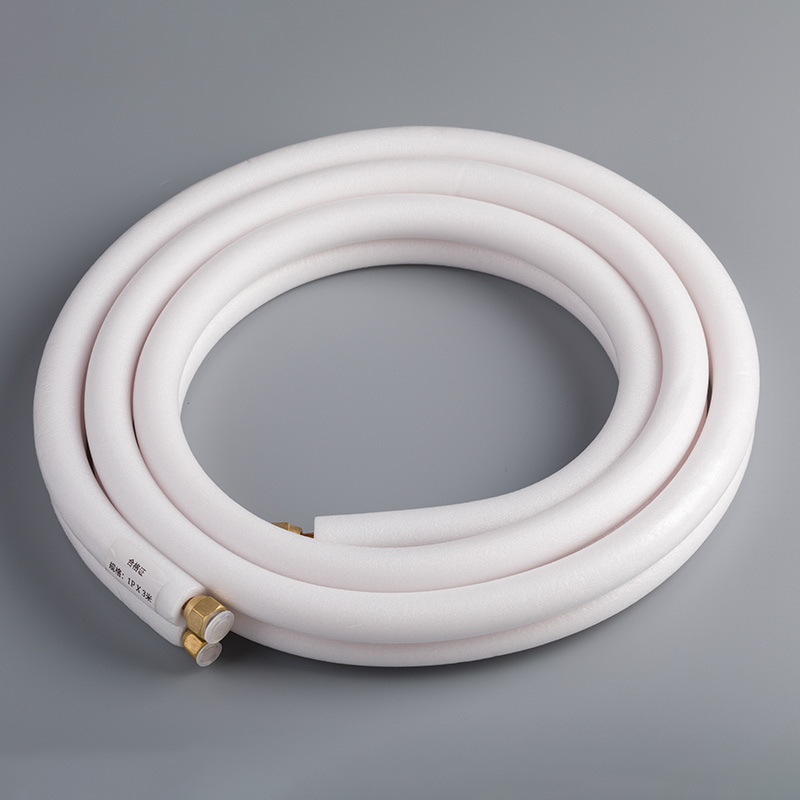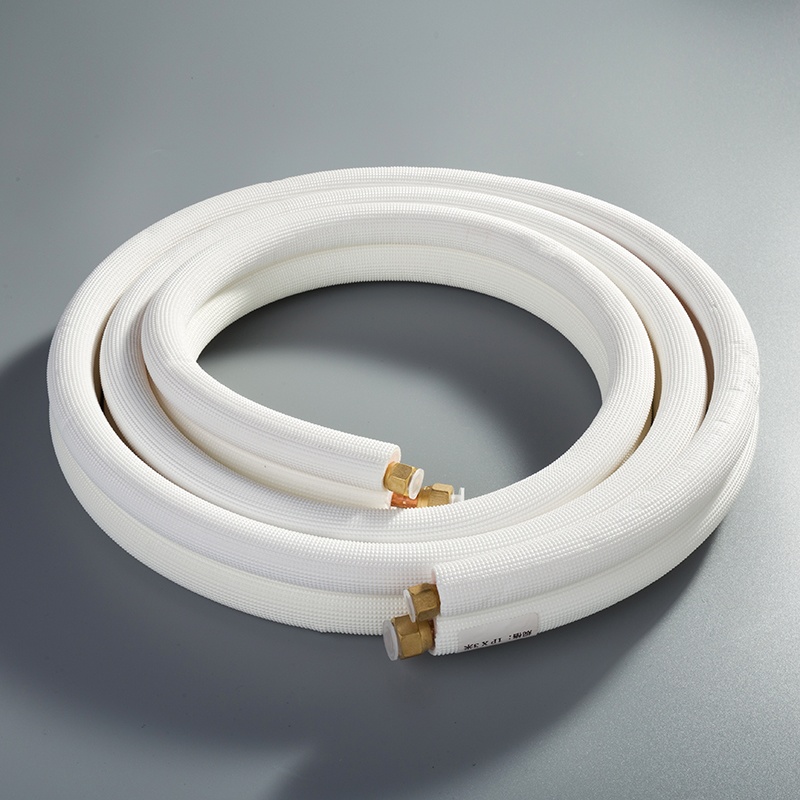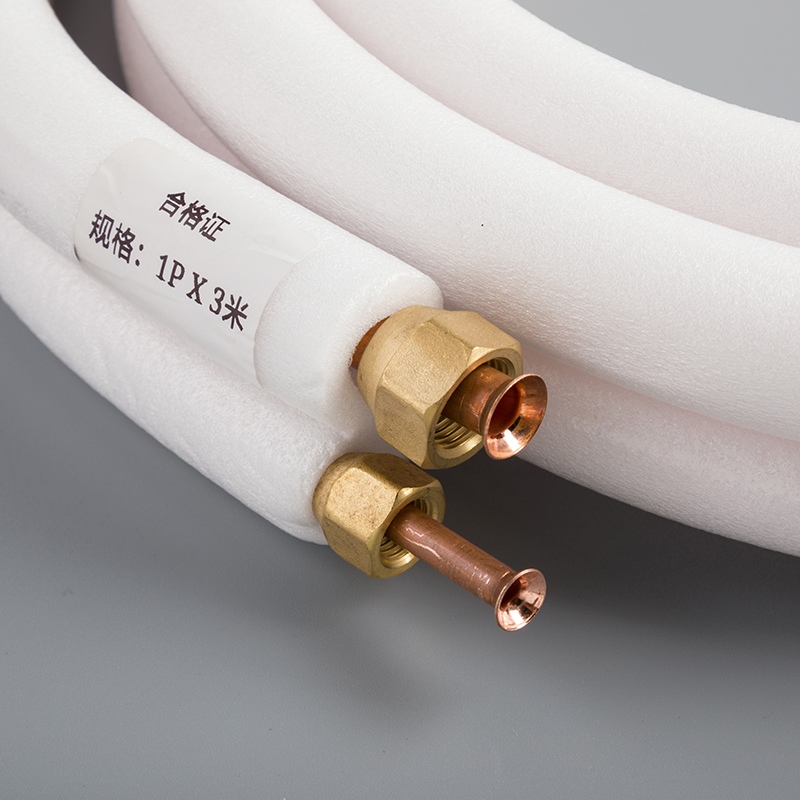Top Tips for Maintaining Aluminum and Copper AC Piping

Tips for Maintaining Aluminum and Copper Piping in Air Conditioning Systems
Regular maintenance is essential for keeping air conditioning systems running efficiently and prolonging their lifespan. In fact, routine care can increase the life of an AC unit by up to 40% and help avoid 50% of expensive repairs. Aluminum and copper piping are key components in air conditioning systems, valued for their unique benefits. Copper is known for its excellent thermal conductivity and resistance to corrosion, while aluminum stands out for its affordability and ability to deliver heat quickly. However, common problems like leaks and corrosion can develop over time, making consistent upkeep crucial for maintaining the performance of your AC system. Follow these tips to ensure your aluminum and copper piping stays in top condition!
Understanding Aluminum and Copper AC Piping

Properties of Aluminum Piping
Advantages of Aluminum
Aluminum piping offers several benefits for air conditioning systems. Aluminum is lightweight, which simplifies transportation and installation. The material is more affordable compared to other options, reducing overall system costs. Aluminum provides excellent thermal conductivity per mass, allowing efficient heat transfer. Flexibility in aluminum piping enables easier adjustments during installation. Resistance to formicary corrosion makes aluminum a reliable choice in specific environments.
Common Issues with Aluminum
Despite its advantages, aluminum piping has some challenges. Aluminum is more prone to physical damage due to its lower strength compared to other materials. Corrosion can occur when aluminum is exposed to certain environmental factors, such as high humidity or pollutants. The material's higher electrical resistance may require additional considerations for electrical connections. Regular maintenance helps mitigate these issues and ensures optimal performance.
Properties of Copper Piping
Advantages of Copper
Copper piping is highly valued for its durability and performance. Copper offers superior strength, making it less susceptible to physical damage. The material provides excellent thermal conductivity per volume, ensuring efficient cooling in air conditioning systems. Copper resists corrosion better than many other materials, increasing the lifespan of the piping. The durability of copper reduces the need for frequent replacements, offering long-term reliability.
Common Issues with Copper
Copper piping, while durable, presents some challenges. The higher cost of copper increases the overall expense of air conditioning systems. Copper is a scarce resource, which can lead to price fluctuations in the market. Improper maintenance may result in corrosion, especially in environments with high levels of moisture or pollutants. Regular inspections and proper care help address these concerns effectively.
Routine Maintenance Tips

Visual Inspections
Identifying Corrosion
Corrosion can weaken aluminum and copper piping in air conditioning systems. Regular inspections help detect early signs of corrosion. Look for discoloration, pitting, or flaking on the surface of the pipes. Areas with high humidity or pollutants often accelerate corrosion. According to AMPP (formerly NACE), identifying corrosion early prevents further damage and reduces repair costs. Use a flashlight to examine hard-to-reach sections of the piping.
Checking for Leaks
Leaks in aluminum and copper piping reduce the efficiency of air conditioning systems. Inspect joints, connections, and bends for any signs of moisture or refrigerant stains. Small bubbles or hissing sounds indicate potential leaks. A professional-grade leak detector enhances accuracy during inspections. Addressing leaks promptly ensures optimal system performance and prevents costly repairs.
Cleaning the Piping
Recommended Cleaning Solutions
Cleaning aluminum and copper piping maintains efficiency in air conditioning systems. Use non-corrosive cleaning solutions specifically designed for metal surfaces. Avoid harsh chemicals that could damage the piping. Mild detergent mixed with warm water effectively removes dirt and grime. For stubborn buildup, apply a specialized cleaner approved for HVAC systems.
Cleaning Techniques
Proper cleaning techniques prevent damage to aluminum and copper piping. Use a soft cloth or sponge to wipe the surface gently. Avoid abrasive tools that may scratch or weaken the material. Rinse thoroughly to remove any residue from the cleaning solution. Dry the pipes completely to prevent moisture-related issues. Regular cleaning improves heat transfer and extends the lifespan of the system.
Insulating the Piping
Importance of Insulation
Insulation protects aluminum and copper piping from external factors. Proper insulation reduces energy loss and improves cooling efficiency. Uninsulated pipes are vulnerable to condensation, leading to moisture-related problems. Insulation also shields the piping from UV rays and extreme weather conditions. Maintaining insulation ensures consistent performance in air conditioning systems.
Best Materials for Insulation
Selecting the right insulation material enhances the durability of aluminum and copper piping. Foam rubber and polyethylene are popular choices for their thermal resistance. Closed-cell insulation materials provide superior protection against moisture. Insulated line set covers offer additional defense for outdoor piping. According to AMPP, high-quality insulation materials prevent environmental damage and prolong the life of air conditioning systems.
Preventive Measures
Regular Professional Inspections
Frequency of Inspections
Professional inspections should occur at least twice a year to maintain aluminum and copper piping in air conditioning systems. Seasonal changes often impact the performance of the system, making biannual checks essential. Frequent inspections help identify potential issues before they escalate into costly repairs. Regular evaluations ensure the longevity and efficiency of the piping.
What to Expect During an Inspection
A professional inspection involves a thorough evaluation of aluminum and copper piping. Technicians check for leaks, corrosion, and physical damage. Electrical terminals undergo cleaning and tightening to ensure proper connections. Non-conductive coatings are applied to protect against electrical interference. Refrigerant lines are inspected for adequate coverage and insulation. A detailed report provides recommendations for maintenance or repairs.
Protective Coatings
Types of Coatings
Protective coatings safeguard aluminum and copper piping from environmental damage. Epoxy coatings provide excellent resistance to moisture and corrosion. Polyurethane coatings offer UV protection and durability in outdoor conditions. Acrylic coatings create a barrier against pollutants and chemical exposure. Each type of coating enhances the lifespan of the piping in specific environments.
Application Process
The application process begins with cleaning the piping surface to remove dirt and grease. A primer is applied to ensure proper adhesion of the protective coating. The chosen coating is then evenly applied using a brush, roller, or spray. Multiple layers may be necessary for optimal protection. The coating is allowed to cure completely before the system resumes operation.
Addressing Environmental Factors
Impact of Humidity
High humidity accelerates corrosion in aluminum and copper piping. Moisture creates an environment conducive to rust and degradation. Insulation materials with closed-cell structures prevent moisture infiltration. Regular cleaning removes contaminants that react with humidity to cause damage. Proper ventilation reduces indoor humidity levels, protecting the piping.
Dealing with Temperature Fluctuations
Temperature fluctuations cause expansion and contraction in aluminum and copper piping. Repeated cycles weaken the material over time, leading to cracks or leaks. Insulated line set covers shield outdoor piping from extreme temperatures. Foam rubber insulation minimizes thermal stress on the piping. Routine inspections detect early signs of damage caused by temperature changes.
Troubleshooting Common Problems
Fixing Minor Leaks
Temporary Fixes
Minor leaks in aluminum and copper piping can disrupt the efficiency of air conditioning systems. Temporary fixes provide a quick solution until professional repairs are possible. Applying HVAC tape or epoxy putty seals small leaks effectively. Wrapping the affected area with rubber and securing it with clamps minimizes further leakage. Regular monitoring of the patched section prevents additional damage.
Permanent Solutions
Permanent solutions ensure the longevity of aluminum and copper piping. Replacing damaged sections of the pipe eliminates the source of the leak. Brazing or soldering repairs cracks and holes in copper pipes securely. Professional-grade sealants designed for aluminum piping restore structural integrity. Scheduling routine maintenance reduces the likelihood of recurring leaks.
Dealing with Corrosion
Identifying Corrosion Early
Corrosion weakens aluminum and copper piping, leading to system inefficiencies. Early identification prevents extensive damage. Discoloration, pitting, and flaking on the pipe surface indicate corrosion. High humidity and pollutants accelerate the corrosion process. Regular inspections help detect these signs promptly. Using a flashlight improves visibility in hard-to-reach areas.
Steps to Remove and Prevent Corrosion
Removing corrosion restores the functionality of air conditioning systems. Cleaning the affected area with a non-abrasive brush removes loose debris. Applying a corrosion inhibitor protects the metal from further degradation. For severe cases, replacing the corroded section ensures optimal performance. Preventive measures, such as installing protective coatings, reduce exposure to environmental factors. Insulating the piping minimizes moisture-related risks.
Handling Blockages
Common Causes of Blockages
Blockages in air conditioning systems hinder proper operation. Accumulated dirt, slime, mold, and algae often clog the condensate drain line. Poorly maintained insulation around copper piping contributes to blockages. A misaligned or broken drain tube restricts water flow. Neglecting regular cleaning exacerbates these issues.
Methods to Clear Blockages
Clearing blockages restores the efficiency of air conditioning systems. Flushing the condensate drain line with water removes obstructions. Using a stiff wire dislodges debris from the unit's drain channels. Running a vacuum clears accumulated matter effectively. Routine cleaning of the evaporator coil prevents buildup in connected components. Scheduling professional servicing addresses persistent blockages.
Maintaining aluminum and copper piping in air conditioning systems ensures long-term efficiency and reduces repair costs. Regular inspections, cleaning, and proper insulation protect the piping from damage. Professional servicing addresses complex issues and prevents recurring problems. Well-maintained piping enhances cooling performance and extends the lifespan of the entire system. Adopting these practices avoids unnecessary expenses and ensures consistent comfort. Following a detailed guide like Write a 'Tips' blog post on 'Maintaining Aluminum and Copper Piping in Air Conditioning Systems' empowers homeowners to take proactive steps for optimal AC performance.
See Also
Five Key Maintenance Strategies for Copper Pipe Coils
A Comprehensive Manual for Keeping Copper Pipes Efficient
Reasons to Opt for Copper Pipes in Air Conditioning


